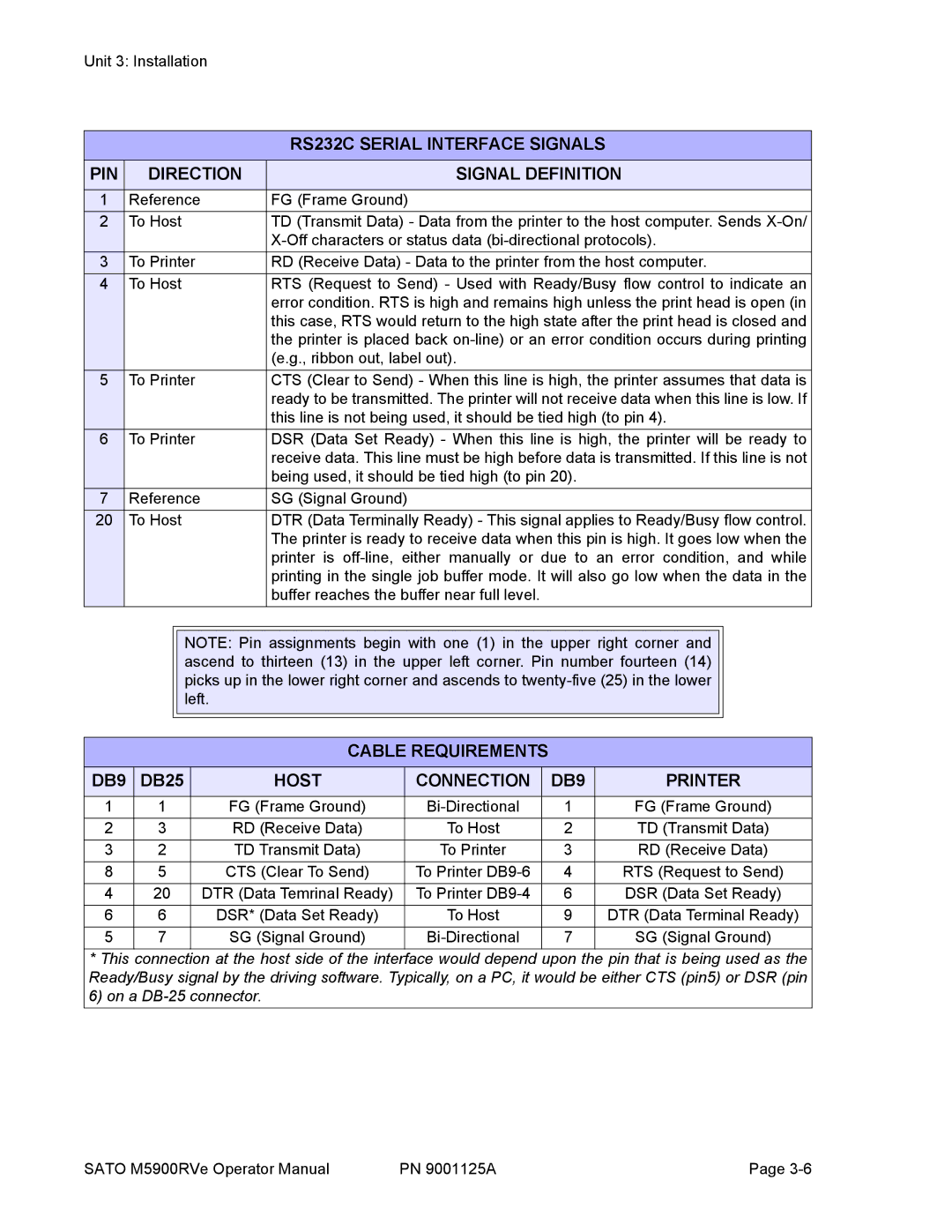
Unit 3: Installation
|
| RS232C SERIAL INTERFACE SIGNALS |
PIN | DIRECTION | SIGNAL DEFINITION |
1 | Reference | FG (Frame Ground) |
2 | To Host | TD (Transmit Data) - Data from the printer to the host computer. Sends |
|
| |
3 | To Printer | RD (Receive Data) - Data to the printer from the host computer. |
4 | To Host | RTS (Request to Send) - Used with Ready/Busy flow control to indicate an |
|
| error condition. RTS is high and remains high unless the print head is open (in |
|
| this case, RTS would return to the high state after the print head is closed and |
|
| the printer is placed back |
|
| (e.g., ribbon out, label out). |
5 | To Printer | CTS (Clear to Send) - When this line is high, the printer assumes that data is |
|
| ready to be transmitted. The printer will not receive data when this line is low. If |
|
| this line is not being used, it should be tied high (to pin 4). |
6 | To Printer | DSR (Data Set Ready) - When this line is high, the printer will be ready to |
|
| receive data. This line must be high before data is transmitted. If this line is not |
|
| being used, it should be tied high (to pin 20). |
7 | Reference | SG (Signal Ground) |
20 | To Host | DTR (Data Terminally Ready) - This signal applies to Ready/Busy flow control. |
|
| The printer is ready to receive data when this pin is high. It goes low when the |
|
| printer is |
|
| printing in the single job buffer mode. It will also go low when the data in the |
|
| buffer reaches the buffer near full level. |
NOTE: Pin assignments begin with one (1) in the upper right corner and ascend to thirteen (13) in the upper left corner. Pin number fourteen (14) picks up in the lower right corner and ascends to
CABLE REQUIREMENTS
DB9 | DB25 | HOST | CONNECTION | DB9 | PRINTER |
1 | 1 | FG (Frame Ground) | 1 | FG (Frame Ground) | |
2 | 3 | RD (Receive Data) | To Host | 2 | TD (Transmit Data) |
3 | 2 | TD Transmit Data) | To Printer | 3 | RD (Receive Data) |
8 | 5 | CTS (Clear To Send) | To Printer | 4 | RTS (Request to Send) |
4 | 20 | DTR (Data Temrinal Ready) | To Printer | 6 | DSR (Data Set Ready) |
6 | 6 | DSR* (Data Set Ready) | To Host | 9 | DTR (Data Terminal Ready) |
5 | 7 | SG (Signal Ground) | 7 | SG (Signal Ground) |
* This connection at the host side of the interface would depend upon the pin that is being used as the Ready/Busy signal by the driving software. Typically, on a PC, it would be either CTS (pin5) or DSR (pin 6) on a
SATO M5900RVe Operator Manual | PN 9001125A | Page |
